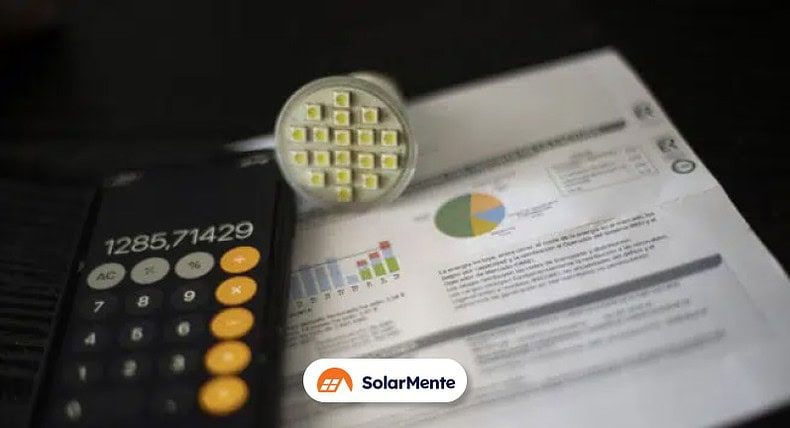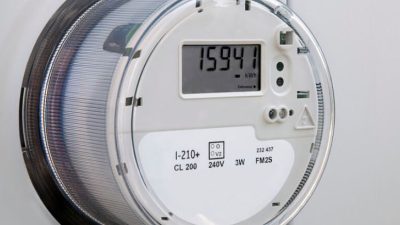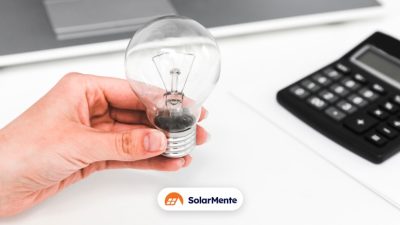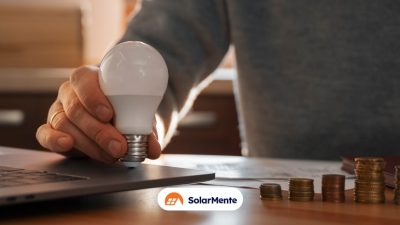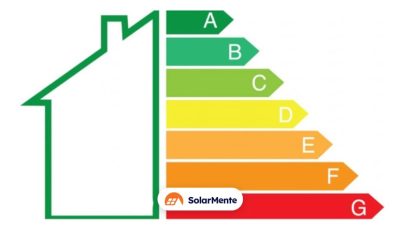The end of the month arrives. Your nerves are on edge.
Your electricity company has informed you that you can consult the statement of your electricity bill.
You see that the amount has increased again and you don’t understand why: new taxes added, changes in tariffs, contracted power. So much information that nobody has explained to you.
What’s more, OCU data show that only 11% of consumers understand their electricity bill in its entirety.
How to read and interpret your electricity bill is essential to know if you are paying more than you should or where that money is going.
That is why today we are going to explain:
- The elements that make up your electricity bill, broken down item by item.
- The taxes you are paying.
- The change from a bill with the conventional electricity grid to a bill with a photovoltaic installation.
The components of the electricity bill
Many times we receive our electricity bill and we only see that we have paid more than the previous month, but why has this happened? What is the reason for this increase?
Understanding the electricity bill can lead to significant savings in electricity. But of course, it is necessary to understand the concepts first.
Although it is true that a large part of the population does not spend the time necessary to know all the detailed data on a bill, other consumers, however much time they spend reading each of the concepts, do not manage to understand it. It is normal that you find yourself in this situation. If no one has explained how it works, how will you know how to interpret it?
We break down an electricity bill point by point to help you understand the amount you have paid.
You can receive your electricity bill in paper or digital format and they are not all the same, but they do have common components, regardless of the electricity company.
Broadly speaking, these are the components that you can find:
- Details of the electricity company.
- Bill details.
- Summary of the bill and payment data.
- Electricity consumption information.
- Contract details.
- Details of the bill.
Let’s see these elements in detail.
Details of the supplier
Easy. These are the details of your electricity company. You will see the company details at the top. These are: CIF, logo and fiscal address.
Invoice details
In this section you can check the date of issue, the invoicing period, the date on which the amount to be paid is debited and also the customer’s details.The full name and address of the home or business will appear.
Your personal details will need to be shared for tariff changes with the same or a different company.
Finally, one point to bear in mind: if you have a rented property, it is not necessary for your name to appear on the bill, but the tenant will decide which company best suits his or her interests.
Summary of the bill and payment details
The invoice summary gives you an overview of the payment for the period of the invoice. These data are
are listed in detail in the following points:
- The amount of the contracted power
- The payment for the energy consumed
- Taxes
- Other concepts.
Information on electricity consumption
In this section, you will have all the
consumption history over the months. You have a bar or linear graph of the evolution of the energy consumed in the last 12 months, plus the total consumption data in that period established per kWh.If you think about it, this information allows you to analyse the consumption generated month by month and to make subsequent checks of this increase in order to take action.
Contract data
The contract data includes several elements to mention.First, we find the details of the owner. These are the full name, the address of the property and the details of the NIF, NIE or CIF.
Having said that, all the data mentioned below refer to the contract.
We start with the contracted power, which is measured in kW. This power could be modified twice a year without any cost, but from June 2022 this measure changed.
From now on, you can only make one modification per year and there are associated costs depending on whether you increase or reduce the power . In case of lowering the power, you will have to pay an amount of approximately 10-11 euros.
What happens if we want to increase the power? The amount to be paid will be higher, reaching around 45-50 euros for each kW you wish to increase.
These modifications have a very simple process. You can call your electricity company or make the change from your own customer account digitally.
The amount will be the same whether or not you consume that power, bear this in mind. This is why we recommend that you size your needs well so that you do not pay for electricity that you are not going to use.The next piece of information is the
CUPS number. This is an identification number used in the electricity sector to have all the information about the supply point and the distributor to which it corresponds.
The last piece of information to mention is the access tariff defined by the Government. This amount refers to the payment for using the distributor’s network and is made up of two terms: power and energy.
In previous years, it was indicated by the tolls 2.0A, 2.0 DHA and 2.0 DHS, but following the new regulations in force, all these tariffs were grouped under a single toll called 2.0TD. This new tariff will have differentiated prices according to the power and consumption timetable brackets.
Details of the bill
It is good to have an overall view of the amount to be paid on the first page of the bill, but what we want to know is the breakdown of each item. To find out how to read your electricity bill, we will explain all the key points below:
Power term
The power term is the fixed part of the bill. That is, we cannot change this amount no matter how much we want to and, therefore, it is important to adjust the power to our consumption.
How do we calculate the power? By multiplying the base price of each section, whether peak (P1) or off-peak (P2), by the contracted power.
In short, you will pay for access to the consumption of that electrical energy regardless of whether you reach the established range or not.
Details of electricity consumption
This is also known as the variable part of a bill and is the result of multiplying the price per kWh by the energy consumption.
Depending on the tariff, fixed or indexed, the price of electricity will vary during the year.
If you opt for time
discriminating tariffs, this item will be broken down into the three available brackets (peak, flat and off-peak).
Other concepts and taxes
Finally, we come up against taxes and other concepts that we cannot modify, but we can understand where this amount is going.
We start with the electricity tax set by the Spanish Government, which corresponds to 0.5% and is applied to the contracted power and consumption terms.
To all this, we must add the meter rent, the gas cap and
VAT. All these items are detailed in the following section.
Here is a breakdown of all the taxes on an electricity bill
Taxes are a relevant item that we must understand and that varies over the years with modifications or new associated costs that sometimes we do not understand and are necessary to understand immediately:
- Electricity tax. This 0.5% tax is applied on the power term and the consumption generated. Although it has now decreased, this percentage used to be 5.11%.
- Social bonus financing. Consumers in the free market will have this concept in their electricity bill to subsidise the Bono Social.
- Gas cap: this new term was approved in RDL 10/2022 and is paid by all consumers, regardless of whether they contract with one company or another. The aim of this measure is to reduce the price of natural gas used for electricity production and to control the price of energy.
- Meter rental. This is the cost to be paid for renting the meter from the distributor if you do not own it. This price is regulated by the Government and can be consulted in the BOE.
- Value Added Tax (VAT): this amount has been reduced several times since 2012. From 21% it went down to 10% in June 2021. The last reduction of the tax was reduced to 5% applied from 1 July 2022, remaining in force until December of the same year.
- Access tolls according to the contracted tariff.
Changes in the electricity bill with a photovoltaic installation
How can we reduce our electricity bill even further? Is there an alternative to being completely dependent on the electricity suppliers?
Such a solution exists and more and more consumers are becoming aware of it. This is the case with the installation of solar panels on your home.
What are the perceived changes in the bill if I opt for
solar energy?
With a
grid-connected photovoltaic system, you will be able to dump the energy production that you were not able to consume in order to receive compensation for those surpluses.
In a bill with these characteristics, we differentiate between fixed and variable terms.
Well, the fixed term corresponds to the contracted power. In this way, the access toll and the margin of the supplier are taken into account.
On the other hand, the variable term refers to the energy consumption and analyses both the surplus discharged and the part consumed. Within this division, you will find the following terms: access toll, cost of energy, energy consumed through the panels and the compensation for the surplus generated.
To summarise
Now you have all the information you need to interpret your electricity bill and find out where you can save more by reducing the corresponding amount.
However, electricity prices are skyrocketing and no matter how much you reduce your consumption, the difference in payment will not be felt to any great extent.
In addition, taxes take a large chunk of our electricity bill, reaching figures of up to 30-40%, despite the new measures adopted with the lowering of VAT, which are not enough to solve the problem of energy dependence that we suffer in Spain.
At SolarMente, we are committed to clean and
green energy through self-consumption photovoltaic installations that allow us to obtain great savings on the electricity bill. You produce that energy and consume it at the same time.
If you still don’t know how much you can save, try our self-consumption calculator and find out how much you can reduce the amount. You’ll be surprised!

